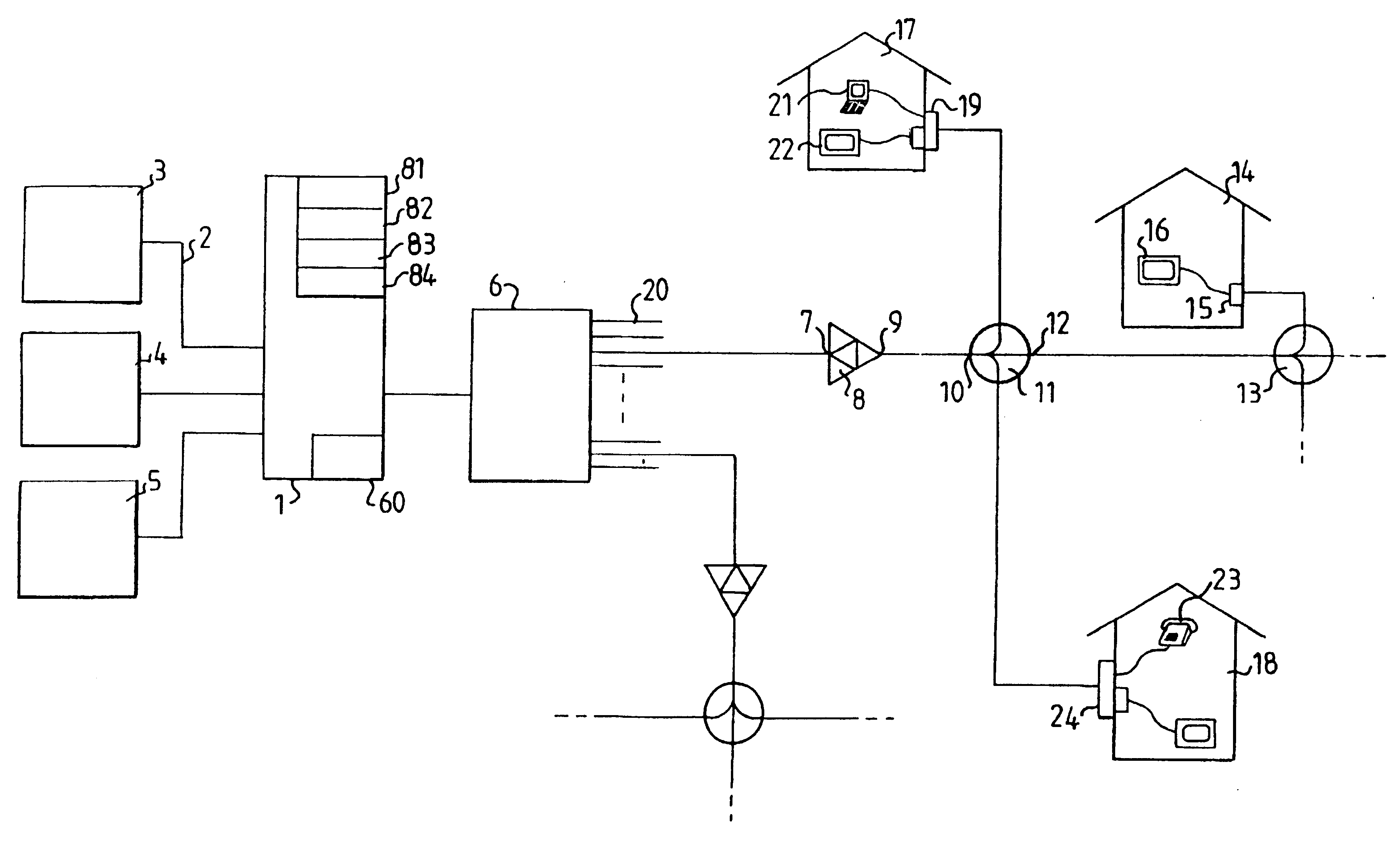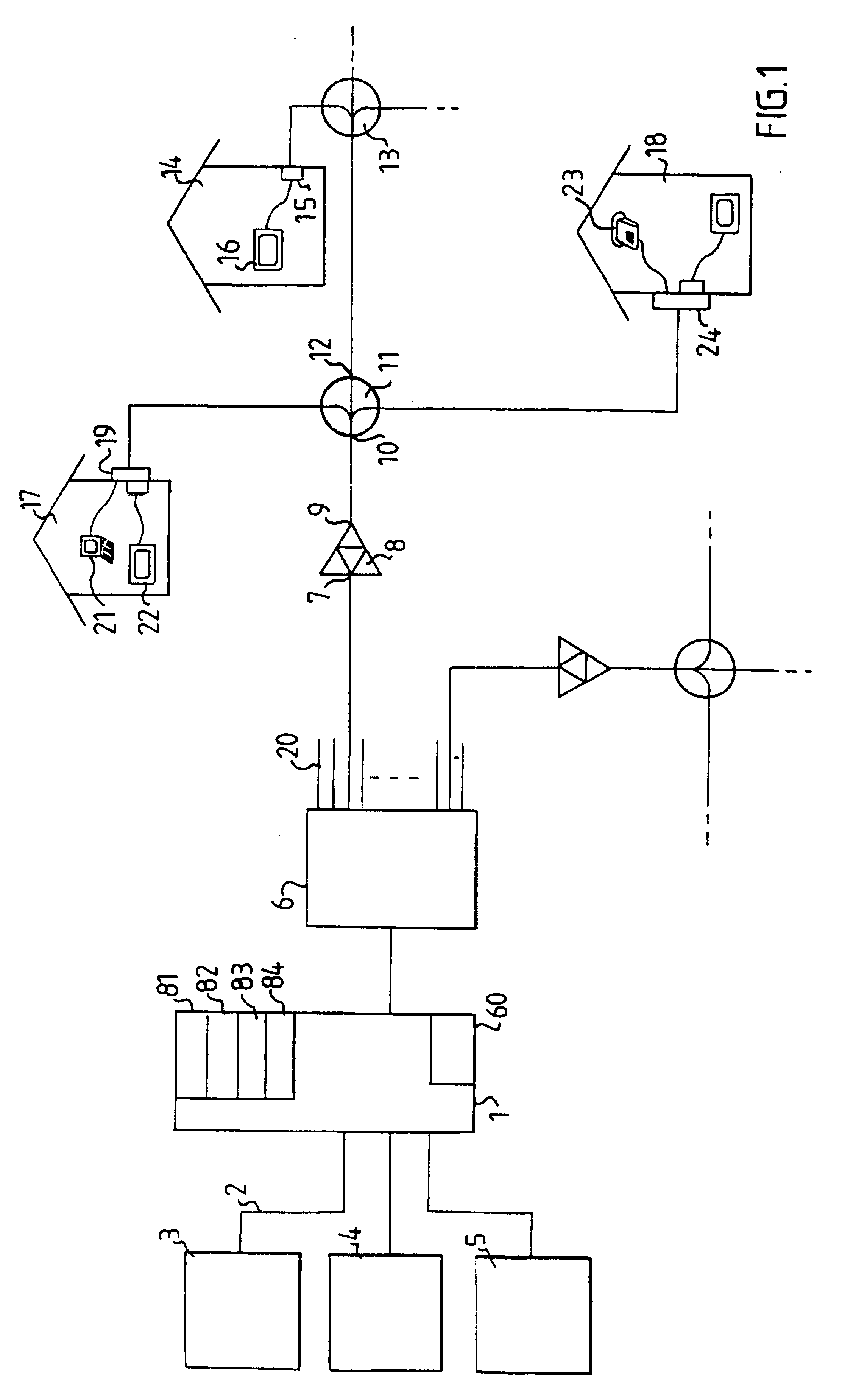Device and method relating to cable TV networks
a cable tv network and cable technology, applied in the field of cable tv network devices and methods, can solve the problems of more narrowband disturbances, inability to use the same protocol when transmitting upstream, and one modem per user to be handled at the station
- Summary
- Abstract
- Description
- Claims
- Application Information
AI Technical Summary
Benefits of technology
Problems solved by technology
Method used
Image
Examples
second embodiment
FIG. 12 shows a QPSK transmitter 126 according to the invention and relevant parts of the downstream receiver 27. (Here too, each subscriber can have one or more QPSK transmitters 126.) The QPSK transmitter 126 functions in the same way as the QPSK transmitter 26 in the preferred embodiment, with the addition of one phase compensation means 142. The phase compensation means 142 compensates for the effect of the protection period T.sub.g on the phase displacement of the signal, by restarting the wave form with a phase displacement specific to each symbol after each symbol. In this embodiment, neither grouping nor filtering of the groups with the same filter banks are needed, as all signals reach the receiver of the base station 1 with a phase displacement specific to each symbol.
FIG. 13 illustrates how each protection period T.sub.g displaces the phase by a phase angle .theta.. T.sub.g =I / 4 gives four possible phase displacements, the displacement given as:
.theta..sub.k =.theta..sub....
third embodiment
According to the invention, the base station 1 can control the QPSK transmitter 26 of each subscriber so as to delay each transmission by a predefined time so that all transmissions will reach the receiver in the base station 1 at the same time and with a phase displacement specific to each symbol. In this embodiment no protection period is needed, and thus no phase error of the kind that arise in the preferred embodiment occurs, i.e. phase compensation or grouping and filtering of the groups using the same filter banks are not needed, as all signals reach the receiver of the base station with a phase displacement specific to each symbol.
The means 81 for computing the protection period T.sub.g and the means for computing the number and appearances of the phase displacements, both of which are found in the base station 1, then provide information for each QPSK transmitter 26 regarding the necessary delay of the upstream transmission. This information may, for example, be combined wit...
PUM
 Login to View More
Login to View More Abstract
Description
Claims
Application Information
 Login to View More
Login to View More - R&D
- Intellectual Property
- Life Sciences
- Materials
- Tech Scout
- Unparalleled Data Quality
- Higher Quality Content
- 60% Fewer Hallucinations
Browse by: Latest US Patents, China's latest patents, Technical Efficacy Thesaurus, Application Domain, Technology Topic, Popular Technical Reports.
© 2025 PatSnap. All rights reserved.Legal|Privacy policy|Modern Slavery Act Transparency Statement|Sitemap|About US| Contact US: help@patsnap.com



